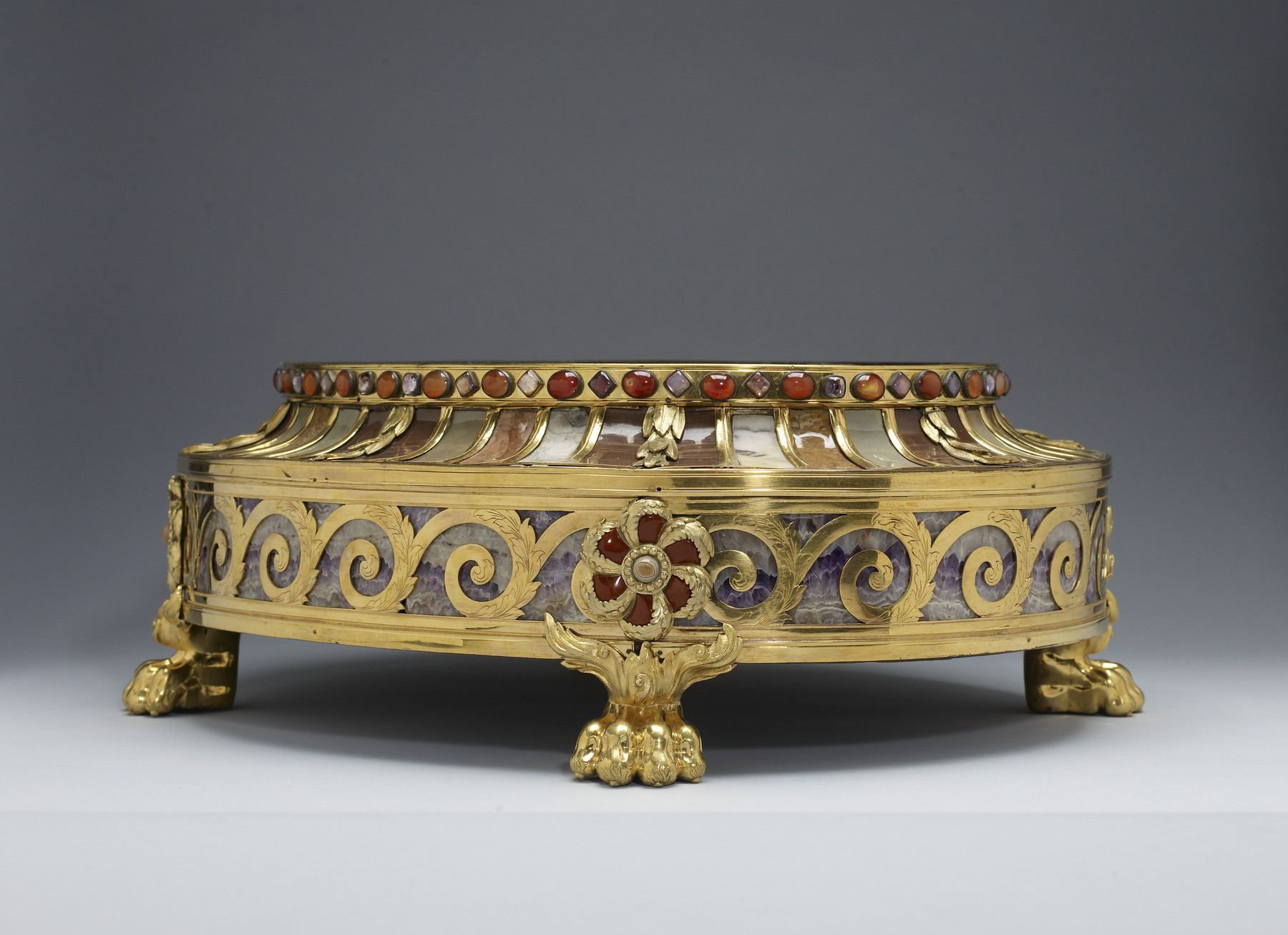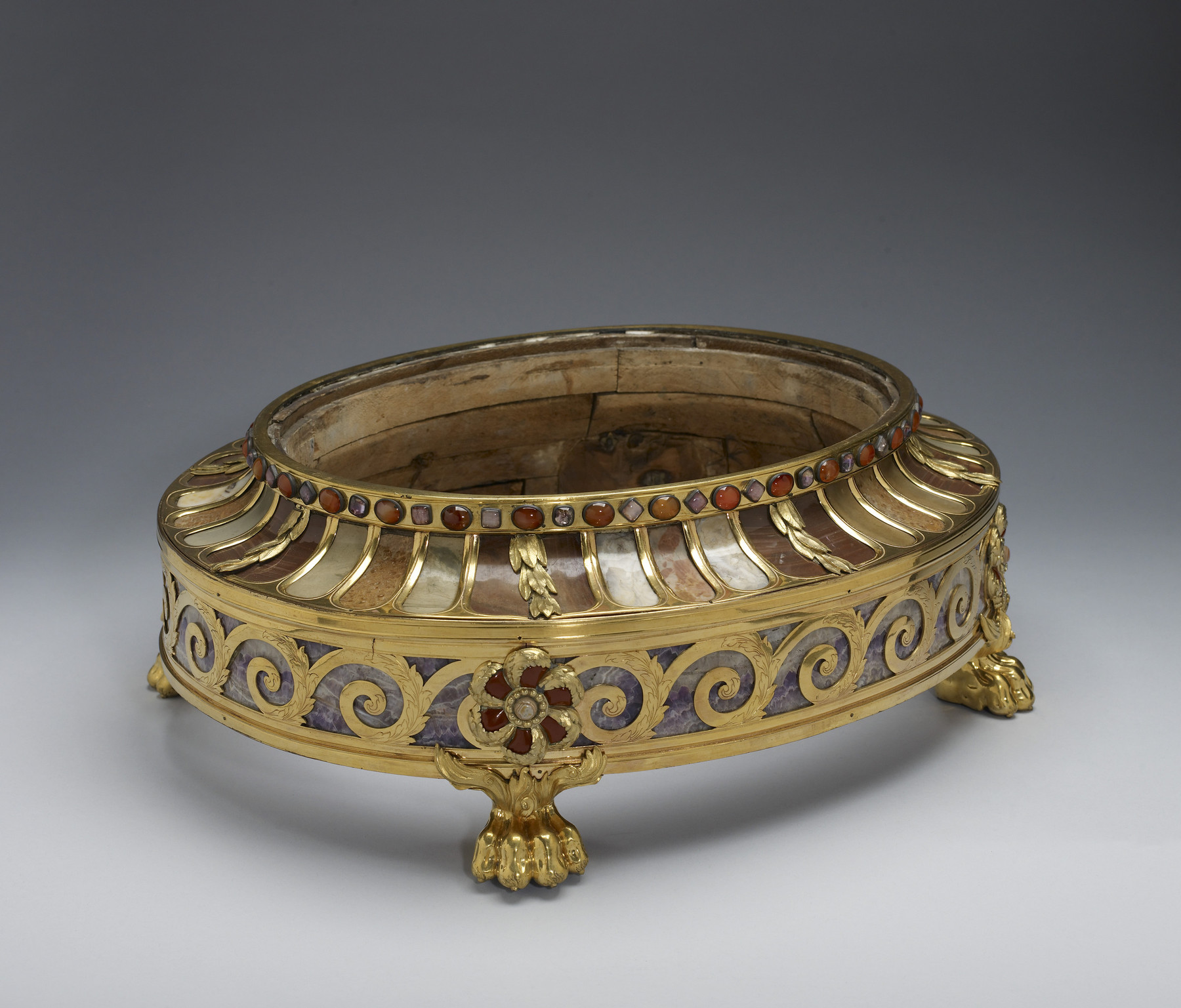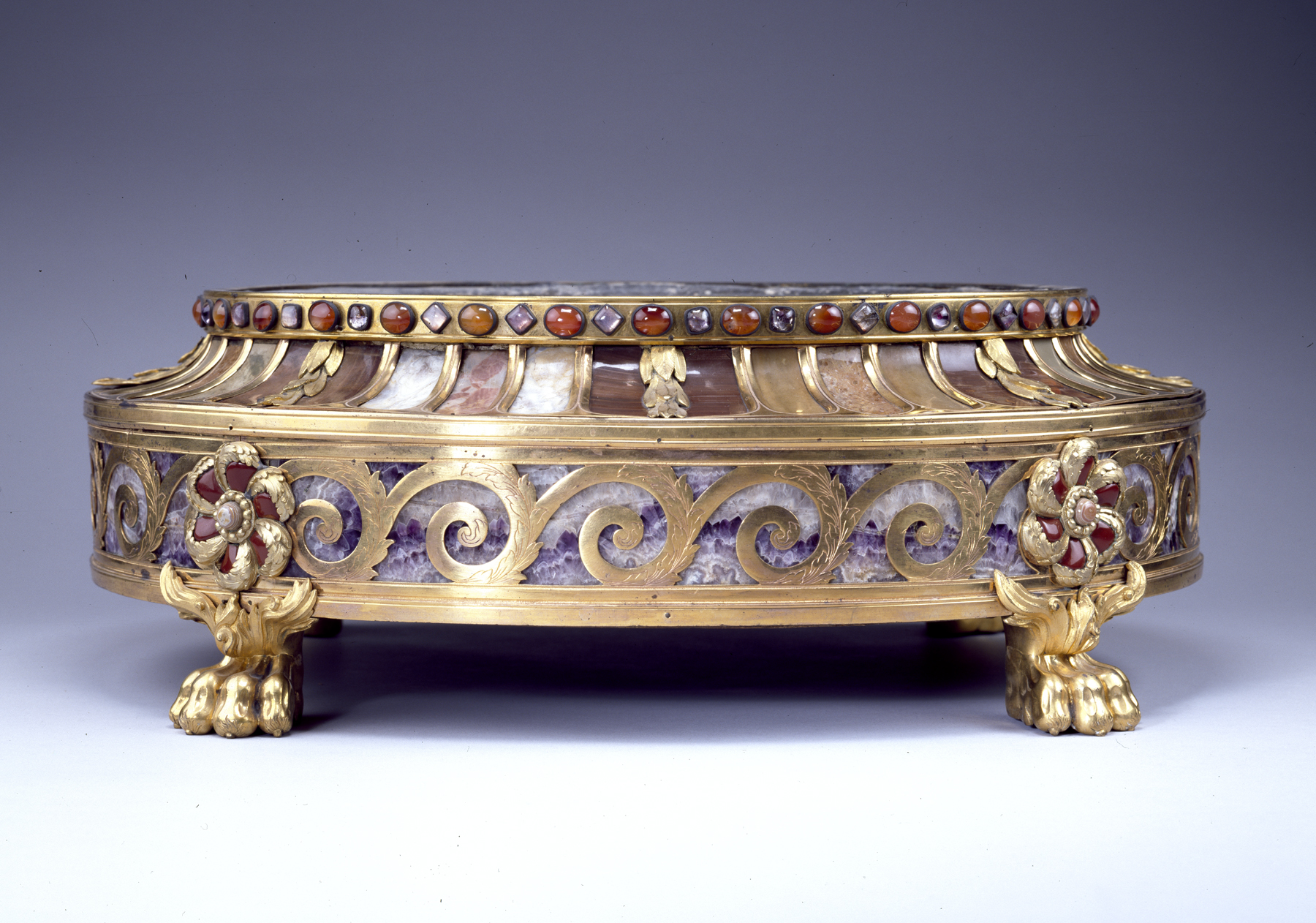Stand or Socle for a Figural Group
(18th and 19th Centuries )
This stand is part of a magnificent diplomatic gift from Frédéric Auguste III (1750-1827), Elector of Saxony, to Prince Nikolai Wasilyevitch Repnin (1732–1801), the Russian emissary at the Treaty of Teschen that restored peace in Europe in 1779. Of this extravagant gift, only two bases have been definitively identified: the piece at the Walters, and another in a private collection in Paris. Although the allegorical Meissen groups that crowned them are now lost, two groups made at the same time and from the same molds remained in Dresden, allowing a partial reconstruction of Repnin’s exceptional centerpiece.
The tradition of mounting specimen stones can be traced to 16th-century Florentine "pietra dura" work. In the late 1700s, techniques for slicing and polishing stones were perfected, allowing lapidaries, most notably the Dresden goldsmith Johann Christian Neuber (1736-1808), to produce masterpieces in which concentric, radiating patterns of specimen hardstones were set in lids of snuffboxes and circular tabletops.
In this work, the skeleton of the container is in gilded bronze with Roman motifs including scroll patterns, "paterae" (saucer-shaped appliqués), and paw feet. The body is lined with sheets of pink amethyst with traces of fluorite, and the rim is decorated with alternating carnelians and foil-backed amethysts. Set in the frame are sheets of dark brown agate, light brown spotted petrified wood, tan agate, pink agate, and white marble. The "paterae" have centers of banded agate and borders of jasper.
Provenance
Provenance (from the French provenir, 'to come from/forth') is the chronology of the ownership, custody, or location of a historical object. Learn more about provenance at the Walters.
Frédéric Auguste III (1750-1827), Elector of Saxony [date and mode of acquisition unknown]; Nicolai Wasilijewitsch Repnin (1732-1801), 1779, by gift [with thanks for his role in the negotiation of the Peace Treaty of Teschen]; Alexandre Polovtsoff (Aleksandr Aleksandrovich Polovtsov), Paris [date and mode of acquisition unknown]; Henry Walters, Baltimore, 1929, by purchase; Walters Art Museum, 1931, by bequest.
Exhibitions
| 2012 | Gold, Jasper, and Cornelian: J. C. Neuber at the Saxon Court. The Frick Collection, New York. |
| 2003-2004 | The Fabergé Menagerie. The Walters Art Museum, Baltimore; Columbus Museum of Art, Columbus; Portland Art Museum, Portland. |
Conservation
| Date | Description | Narrative |
|---|---|---|
| 10/15/1958 | Treatment | cleaned; coated |
| 11/1/2001 | Treatment | Cleaned |
| 11/1/2001 | Treatment | Recent research indicates the object is a stand or socle for a ceramic figure group made by Johann Christian Neuber (1735-1808), Dresden. The stand is part of a table group or surtout. The stand is stable and in good condition without major damages or repairs. |
Geographies
Germany, Dresden (Place of Origin)
Measurements
H: 6 1/2 x W: 19 1/4 x D: 16 1/8 in. (16.5 x 48.9 x 41 cm)
Credit Line
Acquired by Henry Walters, 1929
Location in Museum
Not on view
Accession Number
In libraries, galleries, museums, and archives, an accession number is a unique identifier assigned to each object in the collection.
In libraries, galleries, museums, and archives, an accession number is a unique identifier assigned to each object in the collection.
54.1909












